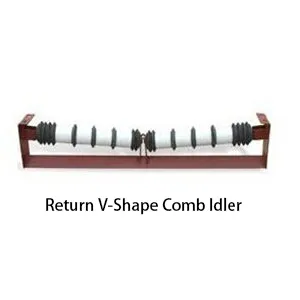 Afrikaans
Afrikaans  Albanian
Albanian  Amharic
Amharic  Arabic
Arabic  Armenian
Armenian  Azerbaijani
Azerbaijani  Basque
Basque  Belarusian
Belarusian  Bengali
Bengali  Bosnian
Bosnian  Bulgarian
Bulgarian  Catalan
Catalan  Cebuano
Cebuano  Corsican
Corsican  Croatian
Croatian  Czech
Czech  Danish
Danish  Dutch
Dutch  English
English  Esperanto
Esperanto  Estonian
Estonian  Finnish
Finnish  French
French  Frisian
Frisian  Galician
Galician  Georgian
Georgian  German
German  Greek
Greek  Gujarati
Gujarati  Haitian Creole
Haitian Creole  hausa
hausa  hawaiian
hawaiian  Hebrew
Hebrew  Hindi
Hindi  Miao
Miao  Hungarian
Hungarian  Icelandic
Icelandic  igbo
igbo  Indonesian
Indonesian  irish
irish  Italian
Italian  Japanese
Japanese  Javanese
Javanese  Kannada
Kannada  kazakh
kazakh  Khmer
Khmer  Rwandese
Rwandese  Korean
Korean  Kurdish
Kurdish  Kyrgyz
Kyrgyz  Lao
Lao  Latin
Latin  Latvian
Latvian  Lithuanian
Lithuanian  Luxembourgish
Luxembourgish  Macedonian
Macedonian  Malgashi
Malgashi  Malay
Malay  Malayalam
Malayalam  Maltese
Maltese  Maori
Maori  Marathi
Marathi  Mongolian
Mongolian  Myanmar
Myanmar  Nepali
Nepali  Norwegian
Norwegian  Norwegian
Norwegian  Occitan
Occitan  Pashto
Pashto  Persian
Persian  Polish
Polish  Portuguese
Portuguese  Punjabi
Punjabi  Romanian
Romanian  Russian
Russian  Samoan
Samoan  Scottish Gaelic
Scottish Gaelic  Serbian
Serbian  Sesotho
Sesotho  Shona
Shona  Sindhi
Sindhi  Sinhala
Sinhala  Slovak
Slovak  Slovenian
Slovenian  Somali
Somali  Spanish
Spanish  Sundanese
Sundanese  Swahili
Swahili  Swedish
Swedish  Tagalog
Tagalog  Tajik
Tajik  Tamil
Tamil  Tatar
Tatar  Telugu
Telugu  Thai
Thai  Turkish
Turkish  Turkmen
Turkmen  Ukrainian
Ukrainian  Urdu
Urdu  Uighur
Uighur  Uzbek
Uzbek  Vietnamese
Vietnamese  Welsh
Welsh  Bantu
Bantu  Yiddish
Yiddish  Yoruba
Yoruba  Zulu
Zulu idler in conveyor belt
The Role of Idler in Conveyor Belts
Conveyor belts are vital components in various industries, facilitating the efficient movement of materials and products. Among the critical components of a conveyor system, the idler plays a significant role in ensuring the smooth operation of the belt. Idlers are the rollers that support the conveyor belt and help maintain its alignment and tension during operation.
The Role of Idler in Conveyor Belts
Additionally, idlers help in maintaining the shape and tension of the conveyor belt. A properly tensioned belt is crucial for optimal performance, as it ensures that materials are transported efficiently and prevents slippage. Over time, a conveyor belt can stretch or sag, which can disrupt its function. Idlers help to distribute the weight of the load evenly across the belt, preventing bulging and misalignment.
idler in conveyor belt

The design and layout of idlers can vary depending on the specific application. There are several types of idlers, including troughing idlers, return idlers, and impact idlers, each serving its unique purpose. Troughing idlers, for instance, are designed to hold the belt in a V-shape, allowing for better containment of bulk materials. Impact idlers, on the other hand, are strategically placed at points where materials are loaded onto the belt to absorb shocks and minimize damage.
Regular maintenance of idlers is essential to ensure the longevity of the conveyor system. Worn-out or damaged idlers can lead to misalignment, increased friction, and ultimately, costly breakdowns. Routine inspections and timely replacements of idlers can significantly enhance the reliability of a conveyor system.
In summary, idlers are crucial to the effective operation of conveyor belts. They reduce friction, maintain belt alignment and tension, and contribute to the overall efficiency of material handling systems. Understanding the importance of idlers and ensuring their maintenance can lead to improved productivity and reduced operational costs in various industrial applications.
-
Revolutionizing Conveyor Reliability with Advanced Rubber Lagging PulleysNewsJul.22,2025
-
Powering Precision and Durability with Expert Manufacturers of Conveyor ComponentsNewsJul.22,2025
-
Optimizing Conveyor Systems with Advanced Conveyor AccessoriesNewsJul.22,2025
-
Maximize Conveyor Efficiency with Quality Conveyor Idler PulleysNewsJul.22,2025
-
Future-Proof Your Conveyor System with High-Performance Polyurethane RollerNewsJul.22,2025
-
Driving Efficiency Forward with Quality Idlers and RollersNewsJul.22,2025





























